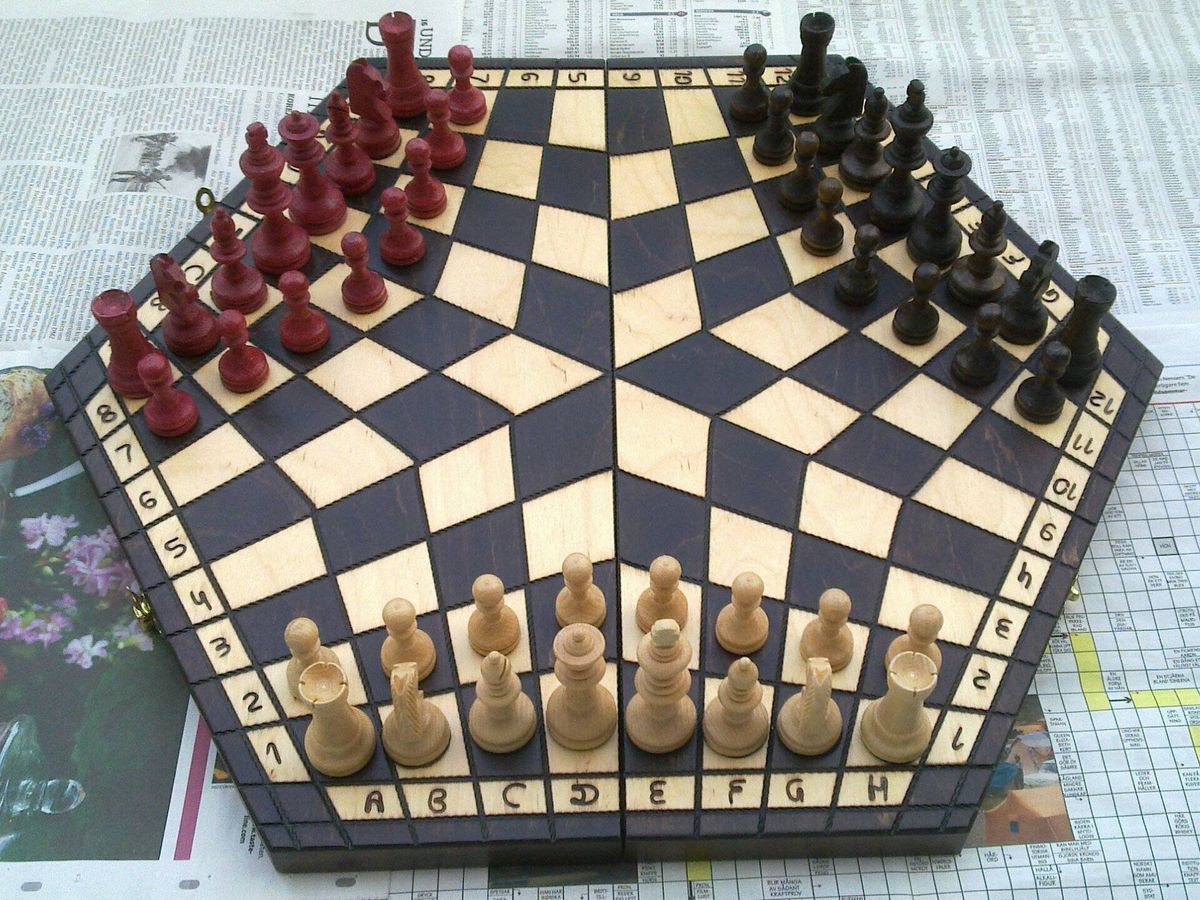Sorry! is not just a game of chance; it’s a classic board game that combines luck with strategy, offering players a chance to engage in a fun and competitive experience. Dating back to the 1930s, Sorry! has been a family favorite for generations. With its simple objective of moving four pawns from start to home, the game requires players to navigate through a series of decisions influenced by the draw of cards. Whether you’re looking to relive nostalgic moments or introduce the game to new players, mastering the strategies of Sorry! can lead to hours of enjoyment for everyone from ages 6 and up.
Key Takeaways
- The objective of Sorry! is to move all four of your pawns from start to home, utilizing a combination of strategy and luck.
- Understanding the rules and card functions is crucial for setting up a successful strategy and making informed in-game decisions.
- Developing a strategy involves assessing risks and rewards, employing effective pawn placement tactics, and knowing when to play offensively or defensively.
- Advanced techniques, such as card counting and prediction, along with the strategic use of the ‘Sorry!’ card, can significantly enhance gameplay.
- Sorry! offers educational benefits and can be adapted for younger players, ensuring it remains a timeless family activity that is both fun and competitive.
Understanding the Basics of Sorry!

The Objective of the Game
The essence of Sorry! is simple yet compelling: be the first to get all four of your pawns from start to home. But the journey is fraught with setbacks and strategic choices. Each player begins with their pawns in their starting area, and through a combination of luck and tactical card play, maneuvers them around the board to their home.
The key to victory in Sorry! is not just speed, but also the timely use of cards and the ability to anticipate opponents’ moves.
While the objective is straightforward, achieving it requires navigating through a series of challenges:
- Utilizing cards effectively to advance your pawns or hinder others.
- Deciding when to take risks, such as leaving the safety of your starting area.
- Balancing offensive moves to progress your pawns with defensive plays to protect them.
Remember, the path to victory is never a straight line in Sorry!; it’s a blend of strategy, luck, and the occasional well-timed ‘Sorry!’
Rules and Card Functions
In the game of Sorry!, each card drawn has a specific function that dictates how a player’s pawns can move on the board. Understanding the role of each card is crucial to formulating a winning strategy. For example, drawing a ‘2’ allows a player to draw again, while an ’11’ can be used to swap places with an opponent’s pawn, introducing a layer of strategy in pawn placement.
Here’s a quick reference for the card functions:
- 1: Move a pawn from Start or move a pawn one space forward.
- 2: Move a pawn two spaces forward and draw again.
- 3: Move a pawn three spaces forward.
- 4: Move a pawn four spaces backward.
- 5: Move a pawn five spaces forward.
- 7: Split the move between two pawns or move one pawn seven spaces.
- 8: Move a pawn eight spaces forward.
- 10: Move a pawn ten spaces forward or one space backward.
- 11: Swap places with an opponent’s pawn or move 11 spaces forward.
- 12: Move a pawn twelve spaces forward.
- Sorry!: Take a pawn from your Start, replace an opponent’s pawn, and send that pawn back to their Start.
It’s important to not only play the cards you’re dealt but to anticipate the cards your opponents might have. This foresight can protect your pawns from unexpected setbacks and position you for a strategic play.
Setting Up for Success
To set the stage for victory in Sorry!, preparation is key. Choose a comfortable and spacious environment to ensure that all players can focus on the game without distractions. A well-lit room with ample seating around a large table can make a significant difference in the overall experience.
Before the game begins, make sure that all game components are in good condition and that each player understands the rules. This includes a quick review of the card functions and the basic strategies for moving pawns.
Remember, a smooth start leads to a more enjoyable and competitive game.
Here are a few tips to keep in mind:
- Select a host location that can accommodate the game’s duration.
- Ensure that snacks and refreshments are available, but keep them away from the game area to avoid spills.
- Verify that all players are clear on the game’s objective and rules to prevent disputes later on.
Developing Your Strategy

Assessing Risks and Rewards
In the game of Sorry!, every move can tip the scales between victory and defeat. Assessing the risks and rewards of each action is crucial for strategic play. Consider the potential benefits of advancing your pawns against the likelihood of them being sent back to Start by an opponent’s card.
- Risks: Moving a pawn out of a safe zone, playing a card that could be better utilized later.
- Rewards: Sending an opponent’s pawn back, moving closer to the safety zone.
Weighing the consequences of each move against the potential gains is the essence of strategic gameplay in Sorry!.
Understanding the balance between risk and reward allows players to make informed decisions. For example, using a ‘2’ card to draw again may seem appealing, but if it exposes your pawn to danger, it might be wiser to wait for a better opportunity. Similarly, a ‘Sorry!’ card can be a powerful tool, but using it prematurely could waste its potential.
Pawn Placement Tactics
In the game of Sorry!, strategic pawn placement is crucial for both offensive and defensive play. Knowing when to move pawns out of the base and into play can significantly impact your game. To begin, a player must roll a six to move a piece out of the base and onto the start position. Once in play, pawns can be moved 1 to 6 spaces based on the die roll.
It’s essential to consider the positions of other players’ pawns on the board when deciding which pawn to move. If possible, avoid placing your pawns in positions where they are likely to be bumped back to the start by opponents.
The ‘Rules of the 6’s’ offer a strategic choice: use a six to bring a new pawn into play or advance a pawn already on the board. Remember, rolling a six grants an extra roll, but rolling three sixes in a row results in losing your turn. Here’s a quick reference for pawn movement decisions:
- If your pawn is close to your home column, prioritize advancing it to safety.
- When an opponent’s pawn is behind yours, consider moving a different pawn to avoid being sent back.
- Use extra rolls from sixes to strategically position pawns for future moves or to block opponents.
By mastering these tactics, you can navigate the board more effectively and increase your chances of winning.
When to Play Offensively vs. Defensively
Mastering the balance between offensive and defensive play is crucial in Sorry!. Playing offensively means aggressively advancing your pawns and taking out opponents’ pieces when possible. Conversely, defensive play focuses on protecting your pawns, perhaps by creating blockades or choosing safer paths.
- Offensive Play: Aim to move out of your start quickly, use ‘Sorry!’ cards to swap with strategic opponents’ pieces, and take every opportunity to send opponents’ pawns back to their start.
- Defensive Play: Keep pawns in your start until you can move them safely, form blockades to protect your path, and save ‘Sorry!’ cards for critical defensive moves.
Deciding whether to play offensively or defensively can often depend on the state of the board and the positions of your opponents’ pawns. If you’re leading, it might be wise to switch to a defensive strategy to maintain your advantage. If you’re behind, an offensive push could be your best chance to catch up.
Remember, the key to success in Sorry! is flexibility. Be ready to switch between offensive and defensive tactics as the game progresses and new opportunities or threats emerge.
Advanced Techniques and Tips

Card Counting and Prediction
Mastering card counting and prediction in Sorry! can significantly enhance your gameplay. By keeping track of which cards have been played, you can better anticipate the cards that are likely to come up. This knowledge allows you to position your pawns strategically, taking into account the potential moves of your opponents.
Card counting isn’t just about memorization; it’s about understanding the flow of the game and making educated guesses on future turns.
Here’s a simple breakdown of the card frequencies in a standard Sorry! deck:
- 1s and 2s: 5 cards each
- 3s and 4s: 4 cards each
- 5s and 12s: 4 cards each
- 7s (split among two pawns): 4 cards
- 8s, 10s, and 11s: No cards
- Sorry! cards: 4 cards
By knowing these frequencies, you can calculate the odds of drawing a particular card, thus informing your decision on whether to advance a pawn or wait for a better opportunity. Remember, the key to using card counting effectively is to remain flexible and adapt your strategy as the game progresses.
The Art of the Apology: Using ‘Sorry!’ to Your Advantage
Mastering the ‘Sorry!’ card is a pivotal part of the game that can turn the tides in your favor. Use the ‘Sorry!’ card not just as a means of progression, but as a strategic weapon. It allows you to swap places with an opponent’s pawn, potentially knocking them back to the start while advancing your own position. This move can be especially powerful late in the game when board positions are critical.
- Assess the board: Look for the most advantageous swaps.
- Target key opponents: Choose which player’s pawn to swap with strategically.
- Time your play: Save your ‘Sorry!’ card for a moment when it can have the most impact.
Remember, the ‘Sorry!’ card is more than just an apology; it’s a game-changer. Use it wisely to navigate the board and outmaneuver your opponents. By dealing five cards to each player at the start, the game becomes more strategic, allowing for greater planning and decision-making.
Creating and Breaking Alliances
In the dynamic landscape of Sorry!, alliances can be as fleeting as they are strategic. Forming temporary partnerships can provide mutual benefits, such as agreeing not to target each other’s pawns for a certain number of turns. However, the decision to break an alliance should not be taken lightly.
While alliances are not officially part of the Sorry! rules, they add a layer of complexity to the game that can lead to intriguing social dynamics.
Remember, your reputation as a player extends beyond a single game. Always stick to your word with alliances; although you may get a temporary advantage by breaking one, you will never have an honest alliance again. This is particularly important in recurring game groups where trust is a currency.
Here are some considerations for alliance strategy:
- Assess the board state and the positions of all players before proposing an alliance.
- Communicate clearly your intentions and expectations to avoid misunderstandings.
- Be prepared for the alliance to end, either by mutual agreement or necessity.
Family Fun: Making Sorry! Enjoyable for All Ages

Adapting Rules for Younger Players
When introducing Sorry! to younger players, it’s essential to tailor the game for their level of understanding and attention span. Simplifying the rules can make the game more accessible and enjoyable for them. For instance, using only three pawns instead of four can significantly speed up the game, keeping the children engaged.
To ensure clarity and ease of play, consider the following adjustments:
- Clearly explain each card as it comes up, guiding the younger players towards the best move.
- Modify the game to be shorter, perhaps by reducing the number of cards in the deck.
- Encourage learning by involving the children in decision-making, asking them what they think the best move might be.
Remember, the goal is to create a positive experience that encourages family bonding and fun learning opportunities.
Feedback from customers has highlighted the importance of a game that is quick to play and easy to understand. Parents appreciate the helpful instructions and simple rules that allow even 7-year-olds to join in the fun. Adapting the game for younger players not only makes it more suitable for them but can also add a fresh twist for all participants, making it a delightful experience for family members of all ages.
Balancing Competition with Fun
While competition is the essence of any board game, ensuring that it remains enjoyable for all participants is crucial. Balancing the competitive spirit with a sense of fun can transform the game experience from merely winning to creating lasting memories. To achieve this balance, consider implementing house rules that cater to the enjoyment of all players.
- Encourage strategic play without overemphasizing the importance of winning.
- Introduce fun penalties or rewards that don’t affect the game’s outcome significantly.
- Rotate the role of the ‘game master’ to involve everyone in the game’s proceedings.
Remember, the goal is to foster an environment where everyone feels included and has a chance to shine, regardless of their skill level.
Incorporating usability heuristics, such as concealing some types of information, can also add an element of surprise and excitement. For instance, hiding point totals can prevent players from targeting the perceived leader, thus keeping the game light-hearted and unpredictable.
Educational Benefits of Board Games
Board games like Sorry! are more than just entertainment; they are a valuable tool for learning and development. Playing board games can enhance critical thinking, strategy, and decision-making skills. They also foster social interaction and communication, as players must often negotiate, collaborate, or compete in a social setting.
- Problem-solving: Players learn to assess situations and determine the best course of action.
- Math skills: Keeping score, counting moves, and planning ahead involve basic arithmetic.
- Reading: Young players practice reading through game cards and instructions.
- Patience and turn-taking: Board games teach children to wait for their turn and respect others’ turns.
- Sportsmanship: Winning and losing provide opportunities for teaching humility and grace.
Board games bridge the gap between learning and fun, making them an excellent educational resource for players of all ages. They not only provide a platform for family bonding but also contribute to the cognitive and social development of children.
Preserving the Classic: Caring for Your Sorry! Game
Maintaining the Game Components
To ensure the longevity and pristine condition of your Sorry! game components, regular maintenance is key. Keep the game board and cards free from dust and spills by storing them in a clean, dry place. If you’re concerned about pieces moving inadvertently, consider using a light adhesive or temporary fixative to keep them in place during breaks in gameplay.
For the cards and tokens, it’s advisable to use protective sleeves and containers. This not only prevents wear and tear but also makes it easier to organize and handle the components during the game. Here’s a simple list to help you maintain your game components effectively:
- Use a soft cloth to gently wipe the game board.
- Store cards in card sleeves to prevent bending and fraying.
- Keep tokens in a separate container to avoid loss.
- Avoid placing heavy objects on top of the game box to prevent warping.
Remember, taking care of your game components not only preserves their condition but also enhances your gaming experience.
Storing Your Board Game Properly
Proper storage of your Sorry! board game is essential to ensure its longevity and readiness for the next game night. Keep your game box in a cool, dry place away from direct sunlight to prevent warping and fading. It’s also important to organize the game components to avoid loss and damage.
- Use small plastic bags to keep different game pieces together. This prevents them from getting lost and makes setup for the next game quicker.
- Stack your board games horizontally to avoid putting pressure on the boxes at the bottom.
- If the original box is damaged, consider using a storage container that can fit all components snugly.
Remember, taking a few moments to store your game properly can save you time and frustration in the long run.
Passing on the Tradition: Sharing Sorry! with Future Generations
The game of Sorry! has been a family favorite for nearly a century, with its roots stretching back to the 1930s. It’s more than just a game; it’s a piece of family heritage that can be passed down through generations. Sharing this classic with the younger members of your family isn’t just about teaching them the rules; it’s about instilling a sense of history and continuity.
To ensure that the tradition of Sorry! lives on, consider these steps:
- Introduce the game early on, making it a staple during family game nights.
- Share stories of past games and memorable moments to create a rich tapestry of family lore around Sorry!.
- Encourage older children to teach the game to their younger siblings or cousins, fostering a mentorship tradition.
By embedding the game into your family’s culture, you create a legacy that’s about more than winning or losing; it’s about shared experiences and the bonds that form over the game board.
Remember, the physical game itself holds sentimental value. Treat the game with care, store it properly, and it will be ready to bring joy to future generations. As the saying goes, ‘the family that plays together, stays together.’ Let Sorry! be a part of your family’s story for years to come.
Conclusion
Mastering the game of Sorry! is not only about strategic prowess but also about embracing the joy and nostalgia that comes with this classic board game. As we’ve explored various strategies, it’s clear that success in Sorry! requires a blend of tactical card play, timing, and sometimes, a bit of luck. Whether you’re revisiting childhood memories or creating new ones with family and friends, Sorry! remains a beloved game that has stood the test of time. With its simple yet engaging gameplay, it continues to be a source of fun and competition. So, gather your pawns, shuffle the deck, and get ready to apologize as you nudge your opponents’ pieces back to start. Remember, in the end, it’s all about the laughter and camaraderie that come with saying ‘Sorry!’
Frequently Asked Questions
What is the main objective of the Sorry! board game?
The main objective of Sorry! is for each player to move their four pawns from the Start to Home space, using cards drawn from the deck to dictate movement and interactions.
How many players can play Sorry!?
Sorry! is designed for two to four players.
What are the key components included in the Classic Sorry! game?
The Classic Sorry! game includes a gameboard with original artwork, 16 iconic sorry pawns, and a deck of 44 cards with illustrated instructions.
Can Sorry! be a good family activity?
Yes, Sorry! has been a favorite family activity for almost 100 years, suitable for a fun time indoors or winding down after a day of outdoor activities.
What age group is Sorry! suitable for?
Sorry! is suitable for players ages 6 and up, making it a great game for both children and adults.
What do customers say about the value of the Classic Sorry! game?
Customers generally feel that the Classic Sorry! game is worth the price, providing good value and enjoyment for the cost.





